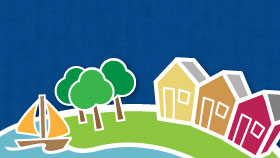
We’ve made planning your Australian history lessons easy with our rich online resources for Year 3 students. The Australian History Mysteries primary website includes a range of interactive case studies that have been designed specifically around the Australian Curriculum: history as outlined below:
Concepts for developing understanding
The content in the history sub-strand provides opportunities for students to develop historical understanding through key concepts including sources, continuity and change, cause and effect, perspectives, empathy and significance. The Year 3 curriculum provides a study of identity and diversity in their local community and beyond, past and present. Students develop understandings about the heritage of their local area (sources, continuity and change), including the importance of Country/Place to Aboriginal and/or Torres Strait Islander Peoples (significance, perspectives, empathy), and how and why their community has changed (continuity and change, cause and effect). Students explore the historical features and diversity of their community as represented in individuals and their contributions, symbols and emblems of significance (significance) and the different celebrations and commemorations, locally and in other places around the world (significance, perspectives, empathy).
Inquiry Questions
- Who lived here first and how do we know?
- How has our community changed? What features have been lost and what features have been retained?
- What is the nature of the contribution made by different groups and individuals in the community?
- How and why do people choose to remember significant events of the past?
The importance of Country/Place to Aboriginal and/or Torres Strait Islander Peoples who belong to a local area (ACHASSK062 – Scootle)
Year 3 Case Studies focus on the four main inquiry questions as set out in the national curriculum.
How has our community changed?
Specific activities/lessons include:
- Activity 1 Stages of development
- Activity 2 How do we find out what causes changes to a place?
- Activity 3 Port Fairy Case Study — An overview
- Activity 4 Port Fairy Case Study — Using a song as evidence
- Activity 5 Port Fairy Case Study — Exploring further
- Activity 6 Port Fairy Case Study — What’s changed?
- Activity 7 Your place research task
What contributions have groups and individuals made in a community?
Specific activities/lessons include:
- Activity 1 How do people shape a community?
- Activity 2 What is a community?
- Activity 3 What were Aboriginal communities like?
- Activity 4 Where is Mildura?
- Activity 5 Interpreting a song about Mildura
- Activity 6 Can a river help make a community?
- Activity 7 Interpreting photographs
- Activity 8 Learning from stories
- Activity 9 Investigating your own community
How and why do people choose to remember significant events of the past?
Specific activities/lessons include:
- Activity 1Why do we remember significant past events?
- Activity 2 What are symbols or emblems?
- Activity 3 What do you celebrate?
- Activity 4 Exploring event symbols
- Activity 5 Researching significant events
- Activity 6 Test your knowledge
Who lived here first and how do we know?
Specific activities/lessons include:
- Activity 1 Who lived here first and how do we know?
- Activity 2 Who lived at Lake Mungo?
- Activity 3 Lifestyle of Aboriginal people
- Activity 4 The environment’s affect on Aboriginal people
- Activity 5 How to make a possum rug
- Activity 6 How to make a spear
- Activity 7 Understanding a healing ceremony
- Activity 8 Test your knowledge.
